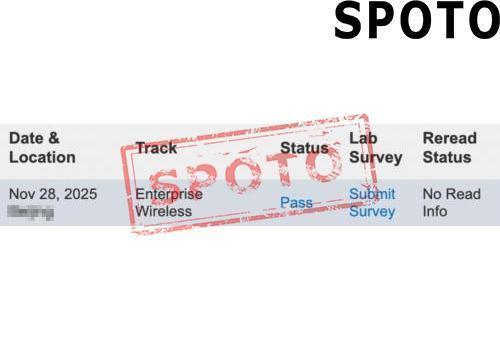
Table of Contents
In today's rapidly advancing information technology landscape, the network has become the central nervous system of modern enterprises. Within this highly interconnected world, network quality of service (QoS) has emerged as a key performance metric, directly impacting communication efficiency and user experience.
To address these mission-critical network requirements, Cisco offers the Certified Design Expert (CCDE) certification, its premier credential for network design professionals. The CCDE certification not only demands deep theoretical knowledge, but also the ability to apply advanced QoS policies to design efficient, reliable network architectures.
This blog will explore the role of QoS in the context of the Cisco CCDE certification, highlighting how network professionals can leverage this expertise to architect enterprise-grade solutions that deliver superior connectivity and user experience.
Ⅰ. QoS Overview
Quality of Service (QoS) is a set of network technologies, protocols, and design principles designed to manage network resources and ensure the delivery performance of critical applications and services. The goal of QoS is to provide differentiated service levels for different data flows with limited network resources to meet specific business needs.
1.1 Core Concepts
Bandwidth: Bandwidth refers to the rate at which data is transferred over a network connection, usually measured in bits per second (bps). It is one of the key indicators to measure the performance of the network and affects the speed of data transmission.
Latency: Latency, also known as network latency, refers to the time it takes for a packet to travel from its source to its destination. In real-time communications, such as VoIP and video conferencing, low latency is critical.
Jitter: Jitter refers to inconsistencies in the arrival time of packets. In continuous data streams, jitter can cause quality of service degradation, especially in real-time audio and video transmissions.
Packet Loss Rate: Packet loss rate refers to the proportion of packets lost during data transmission. A high packet loss rate can lead to a decrease in communication quality or even a loss of communication.
1.2 Different types of QoS models and technologies
Integration Services (IntServ) model
The integrated service model uses mechanisms such as Resource Reservation Protocol (RSVP) to reserve necessary network resources for each data stream to ensure quality of service.
Differentiated Service (DiffServ) model
The differentiated service model provides differentiated processing for different types of traffic by classifying and labeling packets. It uses the DSCP (Differentiated Services Code Point) field to mark the priority of packets.
Traffic Shaping
Traffic shaping is a technique that controls the rate of data flow, which smooths out bursts of traffic and avoids impacts on the network.
Traffic Policing
Traffic policing is used to limit the transmission rate of certain data streams to ensure a reasonable allocation of network resources.
Priority Queuing
Priority queuing technology assigns packets to different queues based on their priority, and packets with higher priority are processed first.
Weighted Fair Queuing (WFQ)
WFQ is a technology that dynamically allocates bandwidth, which adjusts the bandwidth allocation ratio of each queue based on the amount of traffic in the queue.
Policy-Based Routing (PBR)
PBR allows network administrators to decide on the routing path of packets based on specific policies such as traffic type, time, source, etc.
Congestion Management
Congestion management techniques, such as Random Early Detection (RED) and Weighted Random Early Detection (WRED), are used to intelligently drop packets when the network is congested to avoid systemic congestion.
Through these QoS models and technologies, network design experts can build a flexible and efficient network environment that meets the needs of different business scenarios and ensures the performance and user experience of critical applications.
II. QoS Test Centers in CCDE
The CCDE certification exam requires candidates to not only have an in-depth understanding of quality of service (QoS) concepts but also the ability to apply these principles to real-world network design. The following outlines the key QoS test centers and focus areas that may be encountered in the CCDE certification exam, along with the potential question formats:
① QoS Design Principles
Key Focus: Understand core QoS design principles, including fairness, efficiency, simplicity, and scalability.
Question Format: Case analysis questions that require candidates to design a QoS strategy based on a given scenario.
② Traffic Classification and Labeling
Key Focus: Learn techniques for classifying traffic based on type (e.g., real-time audio, video, data) and applying DSCP or 802.1p tagging.
Question Format: Configuration questions that ask candidates to demonstrate traffic classification and labeling methods.
③ Bandwidth Management and Allocation
Key Focus: Comprehend bandwidth management concepts, such as limiting, reservations, and guarantees.
Question Format: Calculation or design questions that require candidates to determine required bandwidth or design a bandwidth allocation strategy.
④ Delay and Jitter Control
Key Focus: Master techniques to mitigate latency and jitter, including traffic shaping and priority queuing.
Question Format: Technical explanation questions that ask candidates to describe how specific technologies can reduce latency and jitter.
⑤ Packet Loss Rate Optimization
Key Focus: Understand the impact of packet loss on network performance and how to minimize it using QoS technologies.
Question Format: Troubleshooting questions that require analyzing the causes of network packet loss and proposing solutions.
⑥ QoS Policy Development
Key Focus: Learn how to develop a comprehensive QoS strategy, including inbound and outbound traffic management.
Question Format: Strategy development questions that task candidates with creating QoS policies based on specific business requirements.
⑦ Advanced QoS Technology
Key Focus: Demonstrate familiarity and proficiency with advanced QoS technologies, such as Weighted Fair Queuing (WFQ), Policy-Based Routing (PBR), and Hierarchical QoS (HQoS).
Question Format: Advanced configuration questions that require candidates to optimize complex QoS settings.
⑧ QoS Monitoring and Troubleshooting
Key Focus: Understand how to monitor QoS performance and quickly identify and resolve QoS-related issues.
Question Format: Mock troubleshooting scenarios that ask candidates to use monitoring tools to analyze and resolve network problems.
⑨ Integration of QoS and Network Protocols
Key Focus: Master the integration methods of QoS with network protocols, such as MPLS and VPN.
Question Format: Integration design questions that require candidates to design a QoS and protocol integration scheme.
⑩ QoS Application in Different Network Scenarios
Key Focus: Understand the variations in QoS application across different network scenarios, such as enterprise and service provider networks.
Question Format: Scenario-based questions that ask candidates to select and apply appropriate QoS technologies for different network environments.
III. Preparation for QoS in CCDE
Preparing for the quality of service (QoS) section of the Cisco Certified Design Expert (CCDE) certification exam requires a systematic approach, blending comprehensive study and extensive practical experience. By following the strategies outlined below, candidates can develop a deep understanding of QoS principles and acquire the skills to design and implement QoS in complex network environments.
3.1 Mastering QoS Design Principles
QoS design principles form the foundation for building an efficient network architecture. These key principles include:
1. Fairness: Ensuring all traffic receives reasonable and equitable service.
2. Efficiency: Maximizing the utilization of network resources and minimizing waste.
3. Simplicity: Designing a QoS strategy that is straightforward to configure, manage, and troubleshoot.
4. Scalability: Implementing a QoS framework that can accommodate future network growth and expansion.
3.2 In-depth Study of QoS Techniques and Strategies
To develop a comprehensive understanding of QoS, candidates should study the following core techniques and strategies:
1. Traffic Classification and Labeling: Accurately identifying and appropriately marking different traffic types.
2. Bandwidth Management: Allocating bandwidth resources to prioritize critical traffic and ensure service-level agreements.
3. Delay and Jitter Control: Implementing techniques, such as traffic shaping, to mitigate latency and jitter.
4. Packet Loss Rate Optimization: Deploying strategies to minimize packet loss and maintain network performance.
3.3 Familiarize with Advanced QoS Configuration and Management
The CCDE exam focuses heavily on advanced QoS technologies, requiring candidates to demonstrate proficiency in configuring and optimizing complex QoS features, including:
1. Weighted Fair Queuing (WFQ): A dynamic bandwidth allocation mechanism.
2. Policy-Based Routing (PBR): Routing based on user-defined policies.
3. Hierarchical QoS (HQoS): A scalable QoS model for large-scale network deployments.
3.4 Practice QoS Configuration and Troubleshooting
Reinforcing theoretical knowledge with practical hands-on experience is crucial. Candidates should engage in lab exercises and simulated configurations to:
1. Practice QoS configuration commands and policy implementation.
2. Develop skills in diagnosing and resolving QoS-related issues.
3.5 Analyze and Design QoS Policies
Effective QoS policy design requires a thorough understanding of network traffic patterns and business requirements. Candidates should learn to:
1. Analyze network traffic and assess the criticality of applications.
2. Design QoS policies that align with the organization's business objectives.
3.6 Monitor QoS Performance
Continuous monitoring is essential to ensure the effectiveness of QoS policies. Candidates should familiarize themselves with:
1. Network monitoring tools and their use in tracking QoS performance metrics.
2. Techniques for adjusting QoS configurations based on monitoring data.
3.7 Integrate QoS with Network Protocols
QoS must be seamlessly integrated with various network protocols. Candidates should understand:
1. Methods for integrating QoS with protocols such as MPLS, VPN, and others.
2. The specific QoS requirements and configurations for different network scenarios.
By mastering these key preparation strategies, CCDE candidates can develop the comprehensive QoS expertise required to design and deploy high-performing, reliable network architectures.
Accelerate Your Path to CCDE Excellence with SPOTO!
Conclusion
The quality of service (QoS) component is a crucial aspect of the Cisco Certified Design Expert (CCDE) certification, serving as a benchmark for assessing a candidate's expertise in network design and optimization. QoS is not merely a technical skill but a necessary competency for meeting the evolving demands of modern network environments.
Preparing comprehensively for the CCDE exam with a deep understanding of QoS requires a multifaceted approach. Candidates must integrate skills such as business requirements analysis, network environment assessment, resource allocation, policy development, and continuous performance monitoring. This holistic preparation ensures the designed network is not only highly efficient but also adaptable to future needs.
By mastering the intricacies of QoS, CCDE candidates not only enhance their professional skills but also position themselves for career advancement. The ability to architect and optimize network infrastructures that deliver consistent, high-quality service is a highly valued asset in the industry. Successful CCDE candidates who demonstrate exceptional QoS expertise will be well-equipped to tackle complex network design challenges and contribute significantly to the success of their organizations.
In conclusion, the CCDE certification's emphasis on QoS underscores its importance as a critical design principle for modern, high-performing networks. By investing in a rigorous preparation process focused on QoS, aspiring CCDE professionals can develop the necessary knowledge and skills to excel in the certification exam and drive innovation in the field of network design and management.










